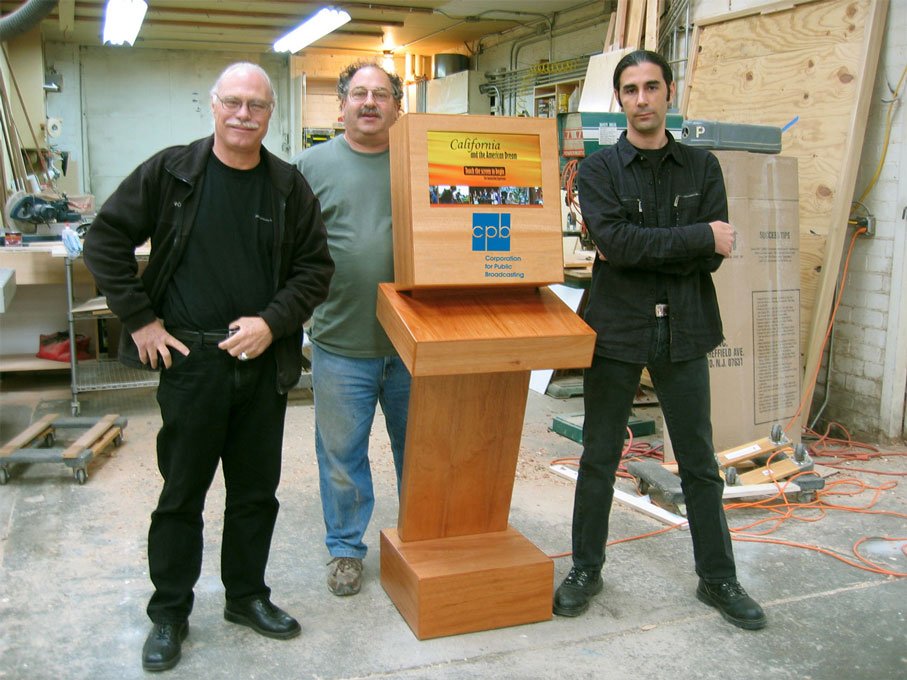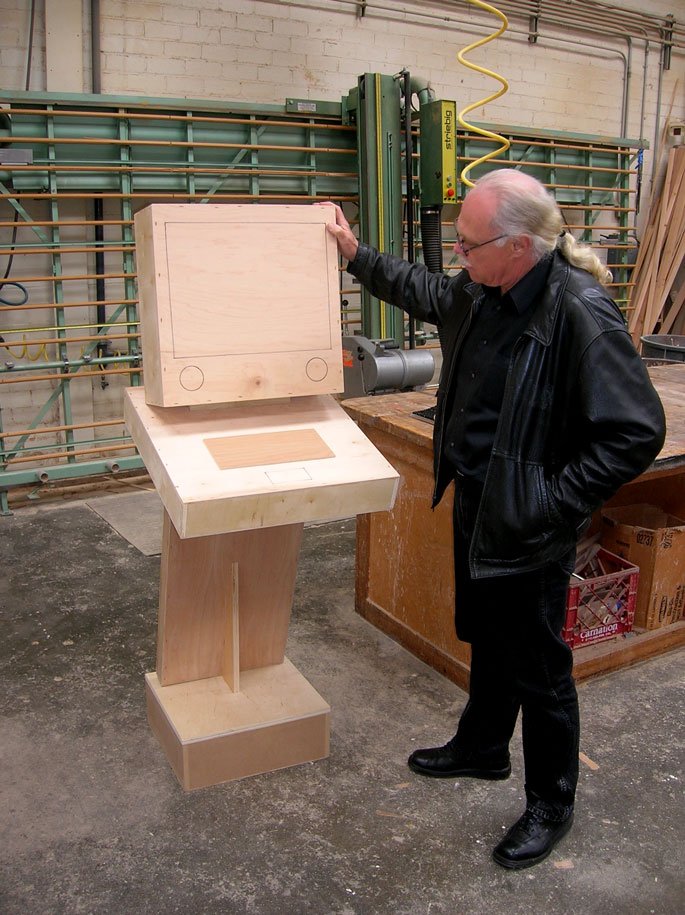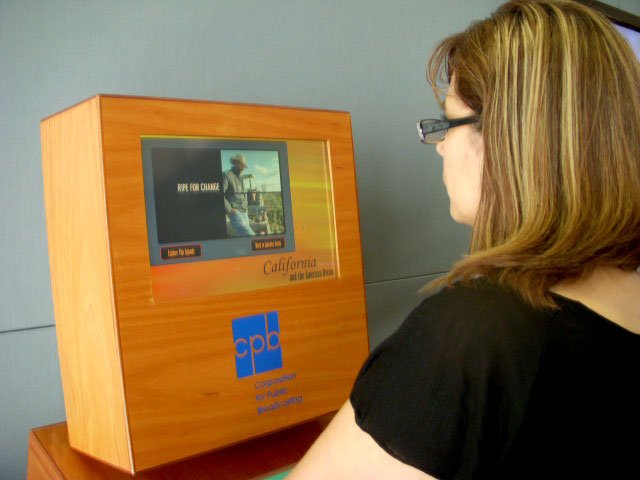Public Broadcasting in Public Places
Public Broadcasting in Public Places brought prime-time national PBS programming to audiences beyond public television in 2007. Funded in part by the Corporation for Public Broadcasting, this groundbreaking digital initiative presented a new concept for interactive kiosks designed to provide entertaining and engaging storytelling.
Working closely with Series producers Lyn Goldfarb, Paul Espinosa, and Emiko Omori, interactive producer Jed Riffe and interactive designer/programmer Emrah Oral (Jed Riffe Films) created four custom-designed interactive kiosks using Apple iMac touch-screen computers. Each kiosk featured specially edited clips with content from the California and the American Dream Series. We also created an interactive California Trivia Game, a contest where users could win DVDs from the Series, and programmed an on-screen keyboard where email addresses could be entered beginning a two-way dialogue.
The kiosks were installed in locations across California including: the Autry Museum of the American West in Los Angeles, CA; the California Museum of History, Women and the Arts in Sacramento, CA; the Price Charities Civic Complex in San Diego, CA; Goggle’s corporate headquarters in Mountain View, CA; the 2008 International Ecological Farming Conference in Pacific Grove, CA; the Grace Hudson Museum in Mendocino, CA; Santa Cruz County Fair and the Center for Sustainable Agroecology at UC Santa Cruz.
In October 2007, the kiosks won a Golden Plaque for best interactive “Visitor Center’s Presentation” in the Chicago International Film Festival’s INTERCOM Competition. The award followed the national premiere of Public Broadcasting in Public Places at the Grantmakers in Film + Electronic Media Opening Plenary at the Council of Foundations Fall Conference for Community Foundations in San Francisco.










